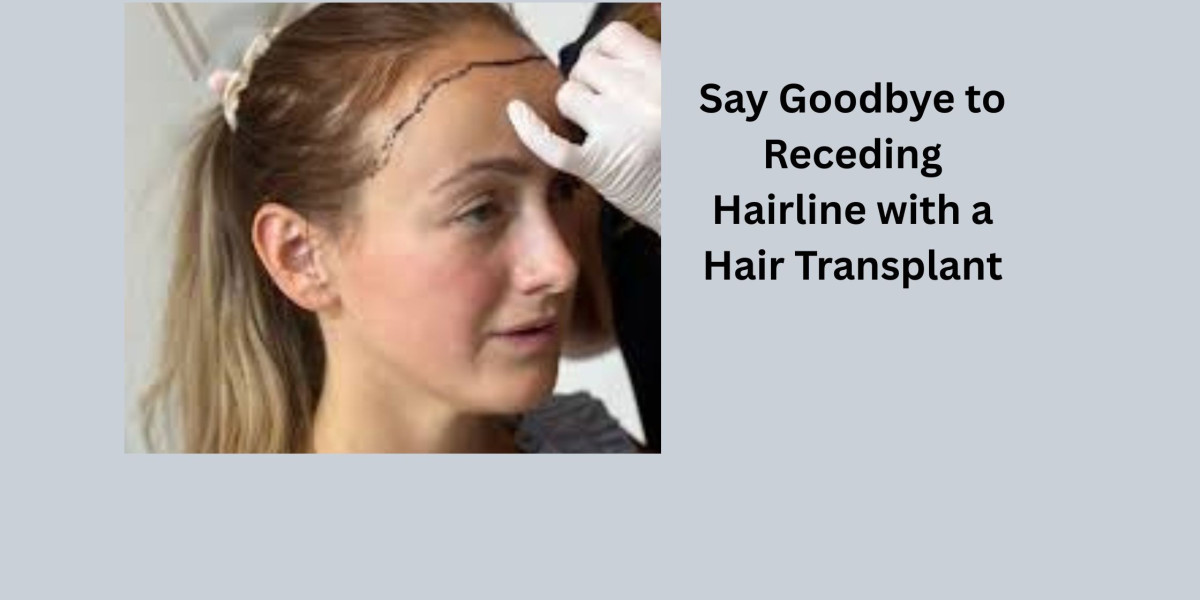The hairline is a key facial feature for both men and women, contributing to the definition of youthfulness, proportion, and facial symmetry. It can make you appear older or unbalanced if it begins to thin or recede. Fortunately, a hair transplant for receding hairline offers a permanent solution that restores a natural, youthful appearance.
What Causes a Receding Hairline?
There are several potential causes of a receding hairline, with genetics being the most common. The hairline usually recedes gradually at the beginning of androgenetic alopecia, often referred to as male or female-pattern baldness. Hormonal changes—especially sensitivity to dihydrotestosterone (DHT)—also play a role. Other contributors include ageing, chronic stress, poor nutrition, and certain medical conditions. Regardless of the cause, a hair transplant for a receding hairline can effectively address the issue.
Why Choose a Hair Transplant?
Unlike topical treatments or cosmetic camouflage, a hair transplant for receding hairline provides long-lasting results. The implanted follicles are unaffected by the hormones that induce hair loss, allowing them to continue growing normally. Patients who undergo this procedure enjoy a significant improvement in appearance, self-esteem, and overall quality of life. It’s not just about hair; it’s about restoring balance and confidence.
Hair Transplant Techniques for Receding Hairline
When it comes to a hair transplant for receding hairline, two primary techniques are used:
FUT (Follicular Unit Transplantation)
This technique involves taking a strip of scalp from the donor area, usually the back of the head, and carefully dividing it into individual follicular units for transplantation. These grafts are carefully implanted along the hairline to create a natural look. While this technique can result in a linear scar, it enables the surgeon to harvest a large number of grafts in a single session.
FUE (Follicular Unit Extraction)
FUE involves removing individual hair follicles from the donor area using a small punch tool. This minimally intrusive procedure avoids leaving a linear scar, making it a preferred option for individuals who like to maintain shorter hairstyles.FUE is especially effective for refining the hairline and producing precise, natural-looking results. Both options are effective for addressing a receding hairline through a hair transplant, and the right choice depends on the patient’s goals, hair type, and medical history.
What to Expect During the Procedure
The hair transplant for receding hairline begins with an in-depth consultation where the surgeon maps out a new, aesthetically pleasing hairline that suits your facial proportions. On the day of the procedure, local anesthesia is applied to keep the patient comfortable. Depending on whether FUT or FUE is selected, donor hair follicles are carefully harvested and precisely implanted into the areas of thinning or balding. Depending on the quantity of grafts required, the procedure typically takes between four and eight hours, during which time patients remain awake and comfortable. If you're seeking this process in Palm Desert, you'll find leading clinics offering a relaxed and advanced treatment experience.
Recovery and Aftercare
Recovery from a hair transplant for receding hairline is generally smooth. Mild swelling, redness, or scabbing in the treated area is normal and typically resolves within one to two weeks. Most patients can return to work and light activities within a few days. Following the aftercare instructions, such as avoiding strenuous exercise and sun exposure, is crucial for optimal healing. Hair typically starts to grow back within 3 to 4 months after the procedure. Patients can achieve complete, long-lasting results that blend seamlessly with their natural hair between nine and twelve months.
Results: Before and After
Patients who undergo a hair transplant for receding hairline often experience transformative results. Before the procedure, the hairline may appear irregular, uneven, or too high, which can affect the overall shape of the face. After the transplant, the new hairline restores facial harmony, bringing back a youthful appearance. The change is not only physical but also emotional—many patients report increased self-assurance and satisfaction with their appearance.
Choosing the Right Clinic and Surgeon
Selecting the right surgeon is vital to the success of a hair transplant for receding hairline. Seek out clinics that focus on hair restoration, have board-certified surgeons, and have a lot of expertise in hairline procedures. Reviewing patient testimonials, before-and-after photos, and clinic credentials can help you make an informed decision.A personalized consultation is key. A trusted clinic—especially in experienced locations like Palm Desert—will carefully evaluate your hair type and create a personalised treatment plan to ensure natural-looking and long-lasting results.
Conclusion
If you’re tired of dealing with a receding hairline and want a permanent solution, a hair transplant for a receding hairline may be the answer. It’s a scientifically advanced, medically safe, and aesthetically rewarding procedure that can restore your hairline and your confidence. With today’s refined techniques, results are virtually undetectable and long-lasting. Beverly Hills Hair Restoration brings expert care and artistic precision to restoring natural-looking hairlines. Whether you're located in Palm Desert or beyond, their skilled team offers personalized hair transplant solutions for receding hairlines delivering transformative, lasting results tailored to your individual needs








